Pumpkin Banana Pancakes

Written by Kenny Ekerin
Fact Checked by Mindsmaking Professionals
24th, November, 2025
This post may contain affiliate links. Please read our disclosure policy.
Looking for a healthy, baby-friendly pancake recipe? These easy-to-make Pumpkin Banana Pancakes are perfect for babies, toddlers, and the whole family! Enjoy as a wholesome breakfast or snack, packed with vitamins, fiber, and natural sweetness.
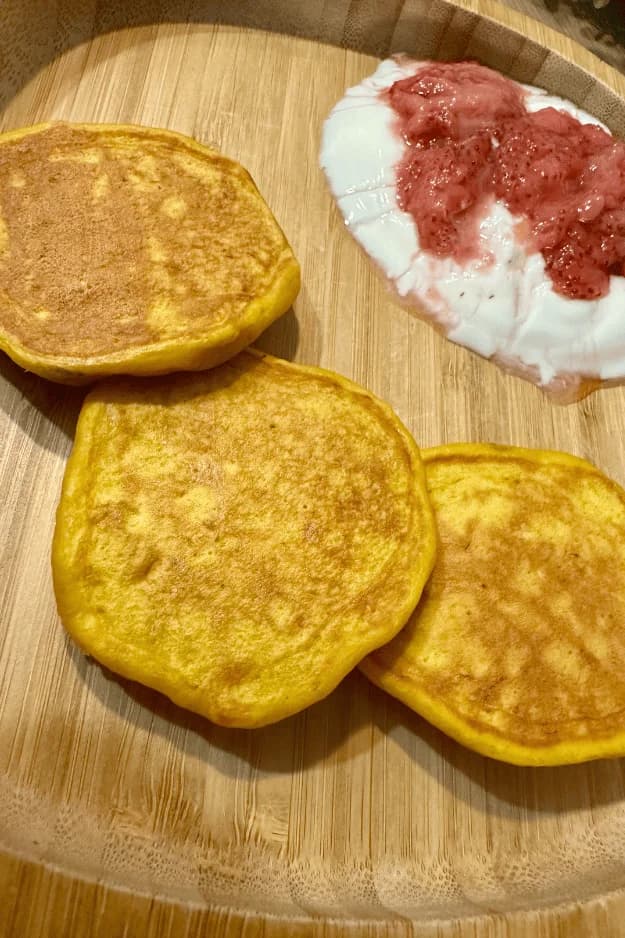
Why these pancakes are great for babies, toddlers, and families
First, they are made with simple, wholesome ingredients like ripe bananas, pumpkin puree, and eggs, all of which provide essential nutrients like fiber, vitamins, and healthy fats.
The natural sweetness of bananas and pumpkins means they don't need added sugar, making them a healthier option for young children, especially babies who are still developing their taste preferences.
The soft texture of the pancakes makes them easy for babies and toddlers to chew and swallow, especially when cut into small, bite-sized pieces or strips. Using whole wheat or oat flour adds extra fiber, which is beneficial for digestion and can help keep little ones feeling full longer.
The pancakes are versatile for families and can be customized with various toppings, allowing for different preferences and dietary needs.
These pancakes also allow babies and toddlers to practice self-feeding and fine motor skills, as they can hold and pick up the pancakes themselves.
Additionally, they are quick and easy to prepare, making them convenient meals for busy families. The recipe is adaptable to different dietary restrictions (such as dairy-free or gluten-free), ensuring that everyone in the family can enjoy them, regardless of specific food preferences or needs.
Whether served plain, with fruit or topped with yogurt or nut butter, these pancakes are nutritious and delicious for the whole family.
Pumpkin Banana Pancakes Recipe
Ingredients:
- 2 medium ripe bananas.
- ½ cup pumpkin puree (unsweetened).
- 2 eggs.
- 3 tablespoons plain yogurt (unsweetened).
- 1 cup all-purpose flour (or whole wheat flour).
- 1 teaspoon baking powder.
- Optional: A pinch of cinnamon or a dash of vanilla extract.
Mindsmaking

Instructions:
1. Mash the Bananas: In a large mixing bowl, peel and mash the two ripe bananas using a fork or potato masher until mostly smooth.
Mindsmaking

2. Add All Remaining Ingredients: To the mashed bananas, add the pumpkin puree, eggs, yogurt, flour, baking powder, and a pinch of cinnamon or a dash of vanilla extract (optional) for extra flavor
Mindsmaking
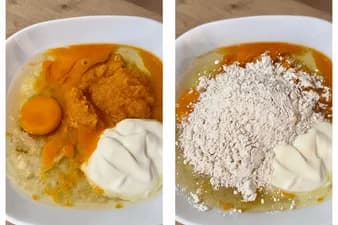
3. Mix Everything Together: Stir all the ingredients together until combined. Do not overmix; just stir until there are no visible dry spots, even if there are a few lumps.
Mindsmaking
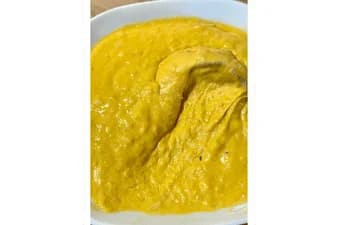
4. Heat the Pan: Heat a nonstick skillet or griddle over medium heat. Lightly grease the pan with unsalted butter or oil.
5. Cook the Pancakes: Pour about ¼ cups of batter into the skillet for each pancake. Cook them for 2–3 minutes until bubbles form on the surface and the edges start to look set. Flip the pancakes and cook for an additional 1–2 minutes, until they are golden brown.
Mindsmaking
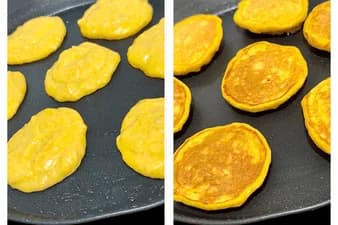
6. Serve: Let the pancakes cool slightly before serving them to babies and toddlers, and cut them into bite-sized pieces if needed. For older children and adults, serve them with toppings like yogurt, fresh fruits, or syrup drizzled for added flavor.
Mindsmaking
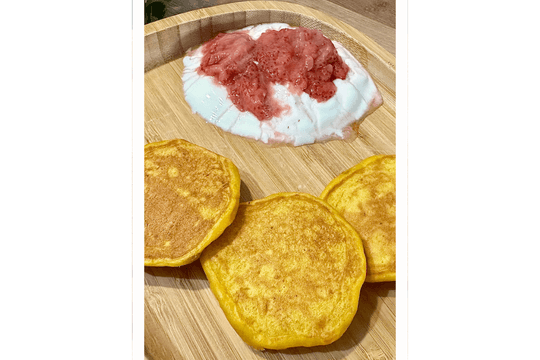
Read This Next

Recipe Ebook
Essential Guide to Starting Solids for Babies 6 Months+ - LBH Top 70 Baby Puree & Porridge Recipes eBook.
Start your baby’s solids journey with confidence using this "70 Baby Purees & Porridges" eBook! Created with care, this digital guide is packed with nutrient-rich recipes for babies 6 months and older, including purees and porridges tailored to each stage of your baby’s development.
Tips for Success
Use Ripe Bananas: Make sure the bananas are overripe, with lots of brown spots. The riper they are, the sweeter and softer they will be, which makes them easier to mash and adds more natural sweetness to the pancakes.
Don’t Overmix the Batter: After adding all the ingredients, stir just until the dry ingredients are combined with the wet. Overmixing can lead to dense, tough pancakes instead of fluffy ones. Small lumps in the batter are okay.
Rest the Batter (Optional): If time allows, let the pancake batter rest for 5–10 minutes before cooking. This allows the flour to absorb the liquid, resulting in fluffier pancakes.
Cook on Medium Heat: Make sure to use medium-low heat. Cooking pancakes too fast on high heat can cause them to brown too quickly on the outside while remaining undercooked inside. Slow and steady ensures even cooking.
Use a Non-Stick Pan or Griddle: Using a good non-stick pan or griddle will help prevent sticking and ensure the pancakes flip easily. You only need a light layer of butter or oil to coat the surface.
Check for Bubbles Before Flipping: Wait until bubbles form on the surface of the pancakes and the edges look slightly set before flipping. This ensures they are cooked through and not raw in the middle.
Make Pancakes Baby-Friendly: For babies under 1 year old, avoid adding sugar or salty toppings like syrup or butter. Cut the pancakes into small, chips
manageable pieces to make them easy for little hands to grab.
Test the first pancake: The first pancake is often a "test" to check the pan's temperature. Adjust the heat as needed after your first batch to get the cooking time just right.
Recipe substitutions and additions
You can adjust this recipe by substituting or adding based on dietary preferences, available ingredients, or enhancing flavor.
You could substitute applesauce or mashed sweet potatoes for the bananas, giving the pancakes a slightly different texture and flavor while maintaining moisture.
If you don't have pumpkin puree, you could use mashed butternut squash, or even pureed carrots, for a similar consistency and sweetness.
You can substitute the eggs with a flax egg (1 tablespoon of ground flaxseed mixed with 2.5 tablespoons of water) or a chia egg (1 tablespoon of chia seeds mixed with 2.5 tablespoons of water).
If you're avoiding dairy, you could use a dairy-free alternative, such as coconut or almond yogurt. Keep in mind that babies need a smooth, non-lumpy texture.
In place of all-purpose flour, you could opt for oat flour or whole wheat flour, which are gentler on sensitive tummies and can provide extra nutrients compared to refined flour.
If you want to enhance flavor without adding sugar, a pinch of cinnamon is perfect, as babies often tolerate it well. You can also try adding a bit of vanilla extract for extra flavor, but be sure it’s the alcohol-free variety.
Instead of adding sweeteners like honey or maple syrup, the natural sweetness from the bananas and pumpkin should be enough for most babies.
Lastly, if you’d like to boost the nutritional value, consider mixing in some ground flaxseeds or hemp seeds. These seeds are safe for babies and toddlers and provide a source of healthy fats and omega-3s. Just be sure to keep the texture smooth and easy to chew.
Serving Suggestions
For serving these pancakes to babies and toddlers, it’s best to keep things simple and safe. After cooking, allow the pancakes to cool slightly before serving.
For younger babies, you can cut the pancakes into small, bite-sized pieces or strips that are easy to grasp and eat. If your baby is at the stage of eating finger foods, offering pancakes as strips will make it easier for them to hold and self-feed.
To make the pancakes more manageable for older toddlers, you can serve them whole or cut them into smaller pieces.
You can serve the pancakes plain or with a variety of baby-friendly toppings. Fresh fruit is a great addition—try serving with mashed or sliced soft fruits like banana, avocado, or berries (make sure the berries are cut into small pieces, mashed or puréed to avoid a choking hazard).
A small dollop of unsweetened applesauce or pureed fruit could also make a tasty and nutritious topping. If your toddler is ready for more texture, a sprinkle of ground flaxseed or chia seeds can add a boost of nutrition without compromising the pancake's soft texture.
Pair the pancakes with a small serving of yogurt or cottage cheese for protein for a more filling meal. If your baby or toddler can tolerate some sweetness, you can drizzle a tiny bit of maple syrup or honey for babies over one-year-old for extra flavor. Avoid adding sugary syrups or spreads that could contribute to excess sugar.
Serve the pancakes with water or milk, depending on what your baby or toddler is accustomed to drinking.
For older kids and adults, you can serve the pancakes with a variety of tasty toppings to enhance the flavor. Fresh fruit is always a great choice—try serving with sliced strawberries, blueberries, bananas, or even a mix of tropical fruits like pineapple or mango.
A drizzle of maple syrup or honey adds natural sweetness, but you can also try other options, such as Greek yogurt for a creamy, protein-packed topping or a dollop of whipped cream for an indulgent twist.
For added texture and nutrition, sprinkle chopped nuts like walnuts, pecans, or almonds. You could also add a spoonful of nut butter, like almond or peanut butter, for a rich, savory flavor and extra protein.
To make the pancakes a more substantial breakfast or brunch option, you could serve them with scrambled eggs or bacon.
For a fun, creative option, try making a pancake stack and layering it with fruit, yogurt, and a drizzle of syrup between each pancake layer.
For a more indulgent treat, you could add a few chocolate chips or a light dusting of powdered sugar for older kids or adults who enjoy a sweeter, dessert-like breakfast.
How to store
To store leftover pancakes, let them cool completely to room temperature. Once cooled, you can stack them with a sheet of parchment paper between each pancake to prevent them from sticking together. Place the stack in an airtight container or a resealable plastic bag. These pancakes can be stored in the refrigerator for up to 3-4 days.
For longer storage, you can freeze the pancakes. To do so, lay them out in a single layer on a baking sheet and freeze for about 1-2 hours. Once frozen, transfer the pancakes to a freezer-safe bag or container. Be sure to remove as much air as possible to prevent freezer burn. Frozen pancakes can last for up to 2-3 months.
When you're ready to eat the pancakes, reheat them in a toaster, microwave, or skillet. If you're reheating them from frozen, it’s best to warm them in the toaster or skillet to ensure they stay fluffy. Just make sure to check that they are heated through before serving.
Was this article helpful?
How many stars are you giving this article?
Leave a comment
Your email address will not be published.
Comments
More From Recipe
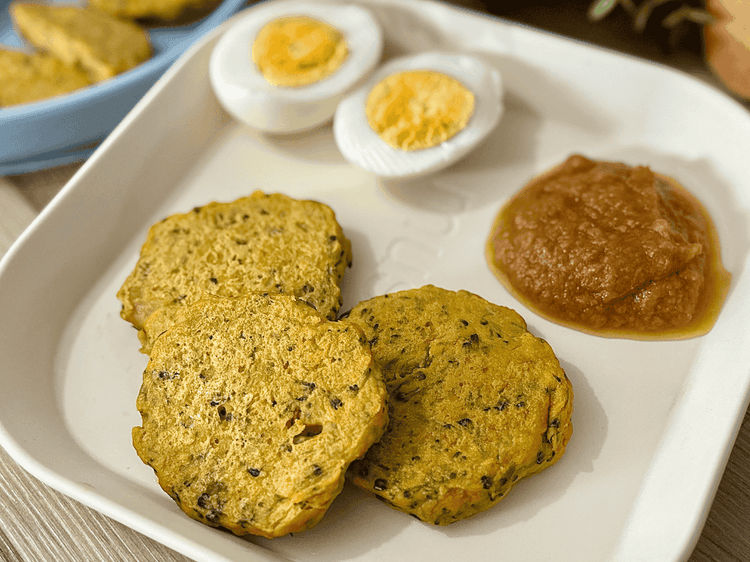
Sweet Potato Broccoli Fritters
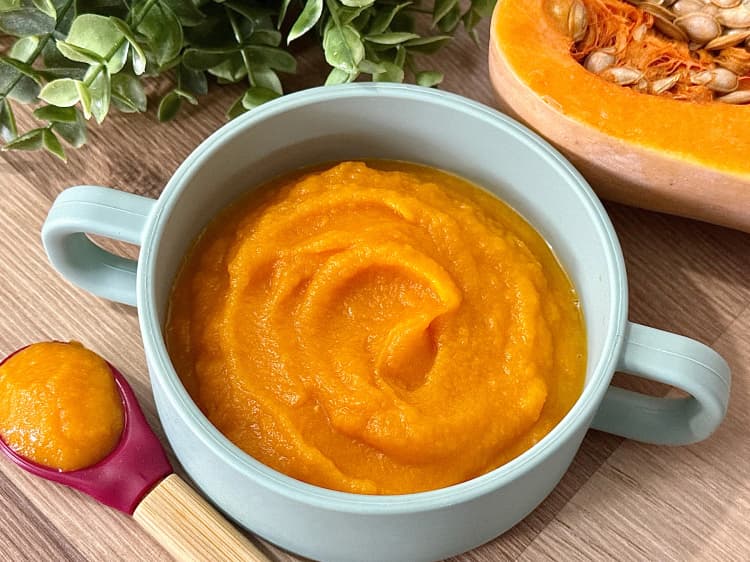
Butternut Squash Baby Food Puree

Easy Homemade Strawberry Yoghurt
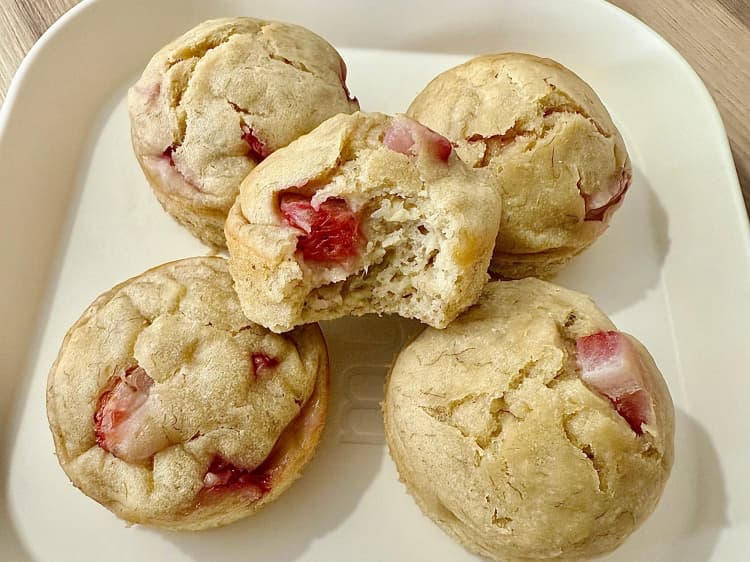
Easy Strawberry Muffins

Apple Oats Cake

Carrot Oat Pancakes
Get new recipes to your inbox
Subscribe to our weekly newsletter and get new recipes sent to your inbox!